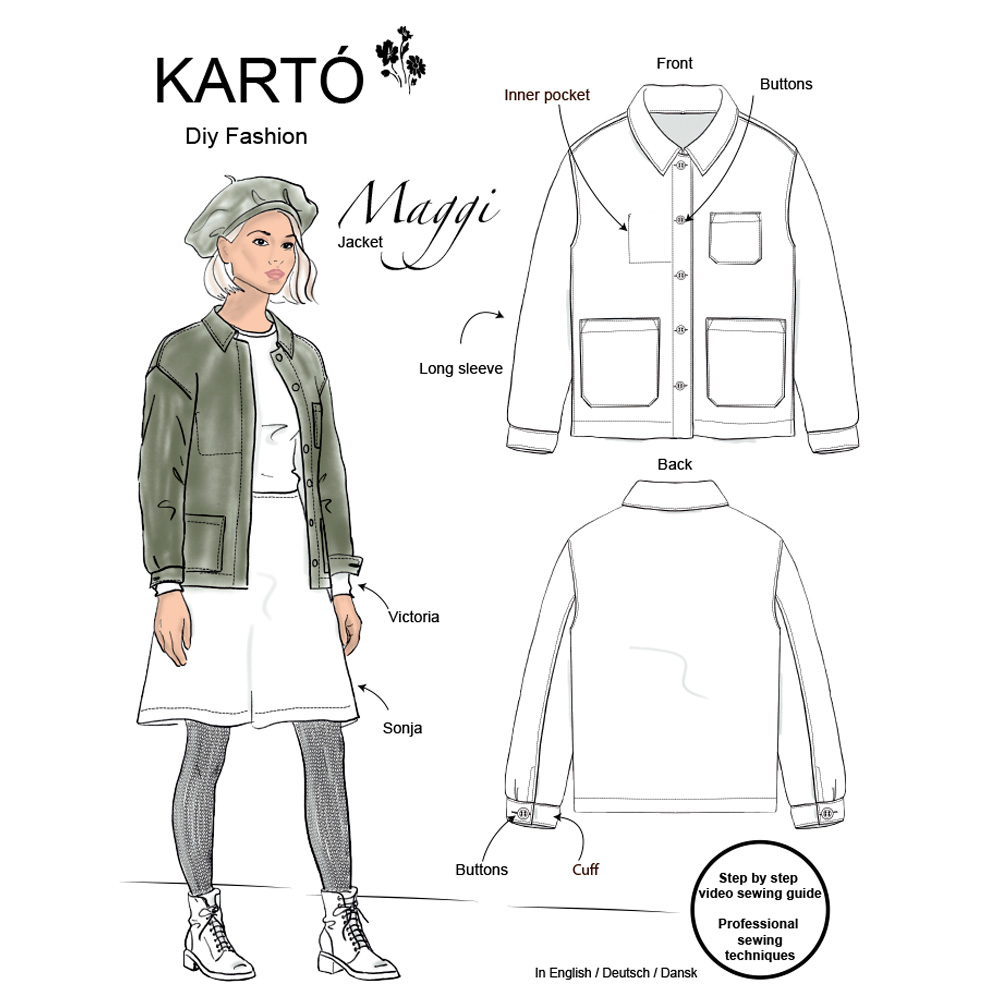
Access to Your Video Sewing Tutorial
You need a password to access your video sewing tutorial.
Your password is printed on the pattern piece for the back and is unique to you.
If you have any questions, you are always welcome to contact us at sewing@karto.dk
1. What you need for the jacket.
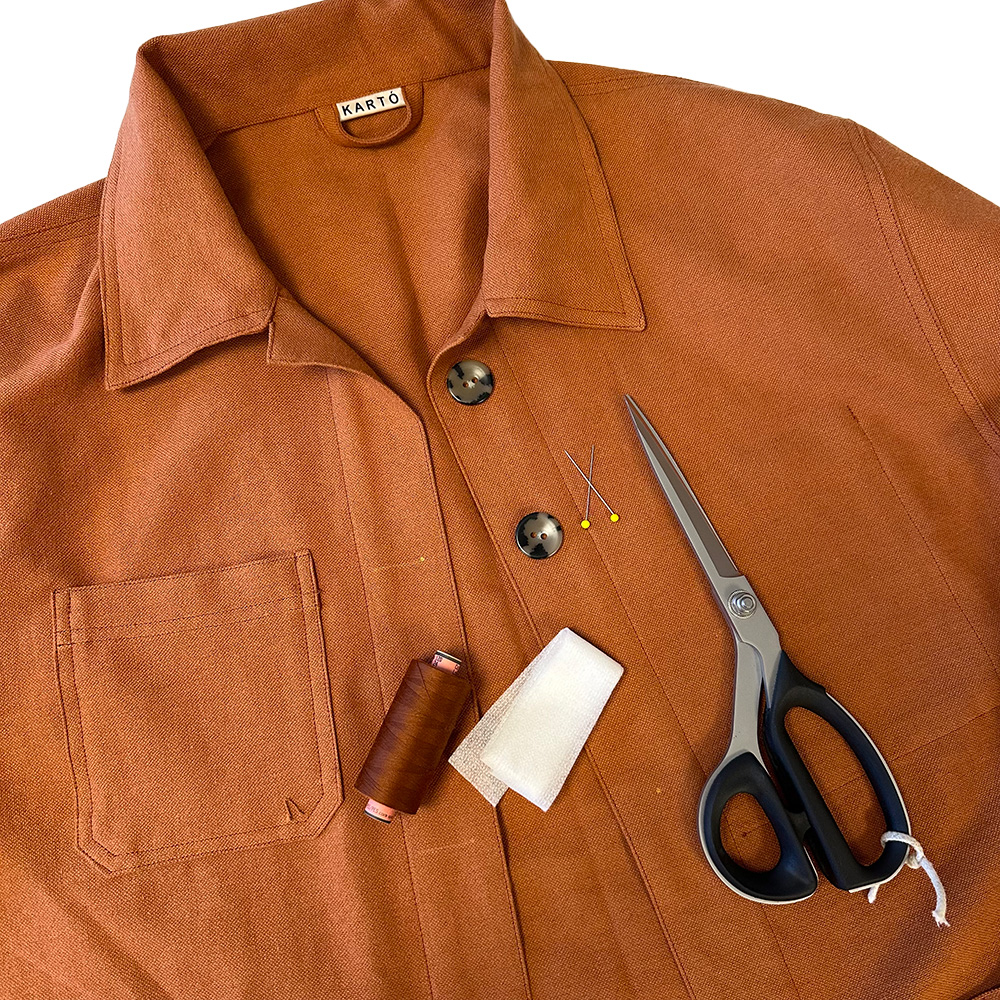
You will need for the Maggi jacket:
-
7 buttons 23mm
-
70 cm soft fusible interfacing H410
-
2.5 meters fusible tape with reinforcement threads, 3 cm wide
How to press the interfacing tape:
Place the tape on the wrong side of the outer fabric with the adhesive side facing down. Cover with a damp cloth and press with the iron for about 12 seconds – without sliding. You can also use the steam function.
2. Your pattern includes a 1 cm seam allowance.
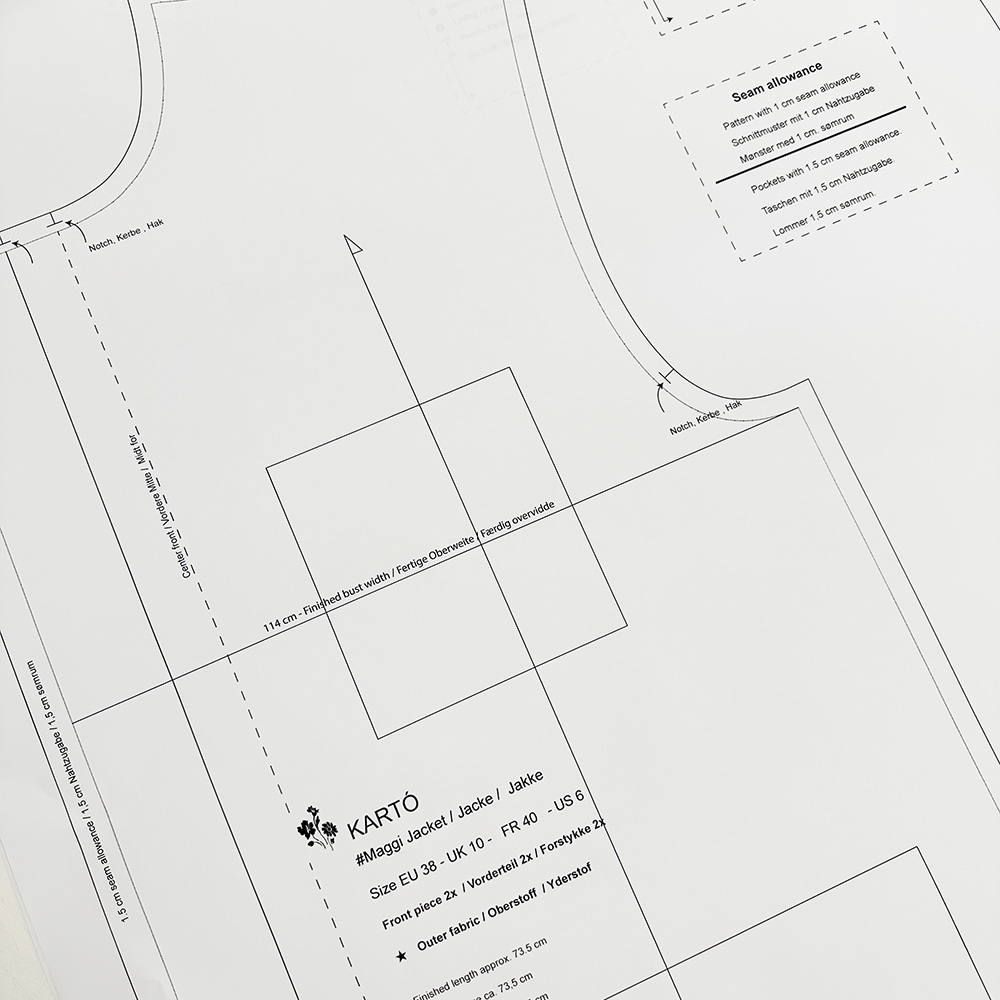
Seam allowance.
Your pattern includes 1 cm seam allowance and 3 cm for the hem.
The pockets have a 1.5 cm seam allowance.
Grainline.
The grainline is important. The arrow on the pattern piece must always be parallel to the selvage to ensure correct placement on the fabric.
Notches.
Remember to cut the small notches according to the markings on the pattern pieces.
Stitch length.
Sew the jacket together with a stitch length of 2.5 (9 stitches per 2 cm).
For topstitching, use a stitch length of 3.
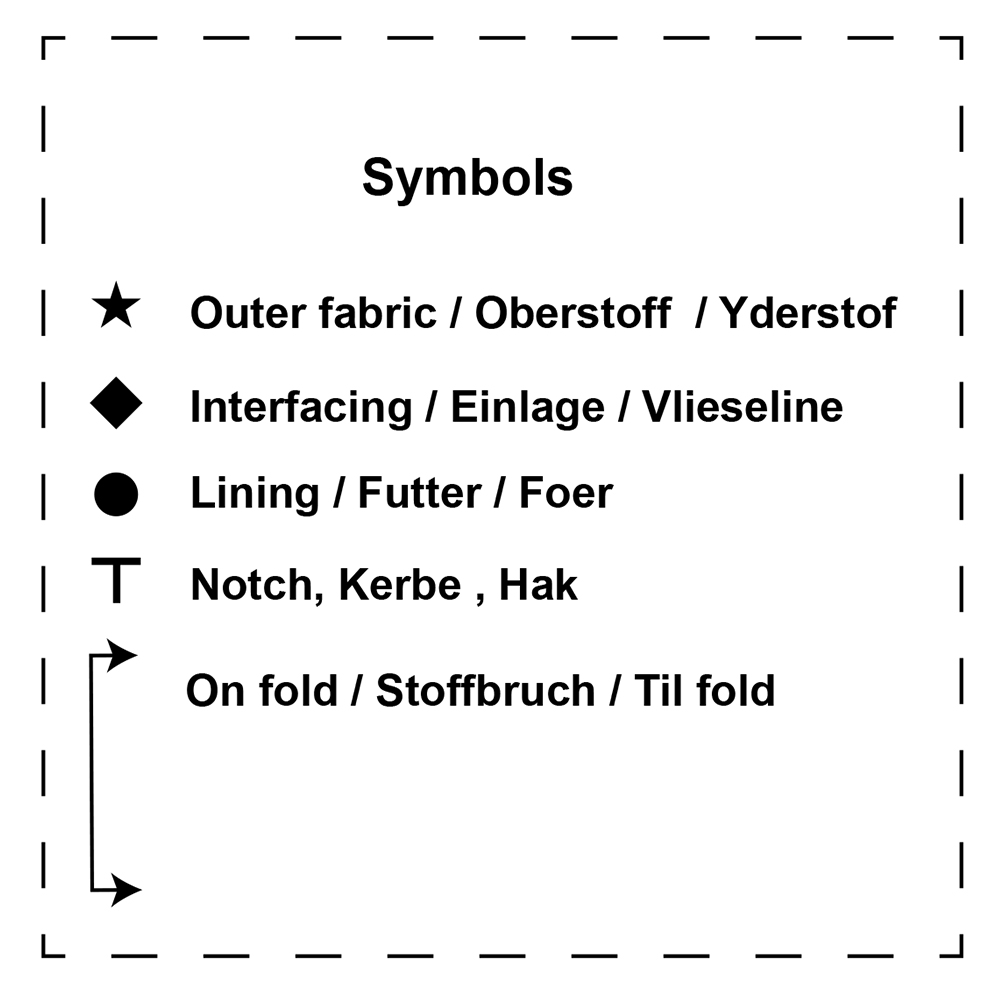
Explanation of symbols in the pattern
In this pattern, different symbols are used to clearly indicate which pieces should be cut in fabric, lining, and interfacing.
There is also a symbol showing which pattern pieces should be placed on the fold of the fabric, as well as notches that help you align the pieces correctly.
Follow the symbols carefully for the best result.
3. Cutting layout
-
Front piece 2x
-
Back piece 1x on fold
-
Large pocket 2x
-
Chest pocket 1x
-
Inside pocket 1x
-
Upper sleeve 2x
-
Under sleeve 2x
-
Cuff 2x
-
Upper collar 1x on fold
-
Under collar 1x on fold
Cutting layout, EU sizes 36 – 38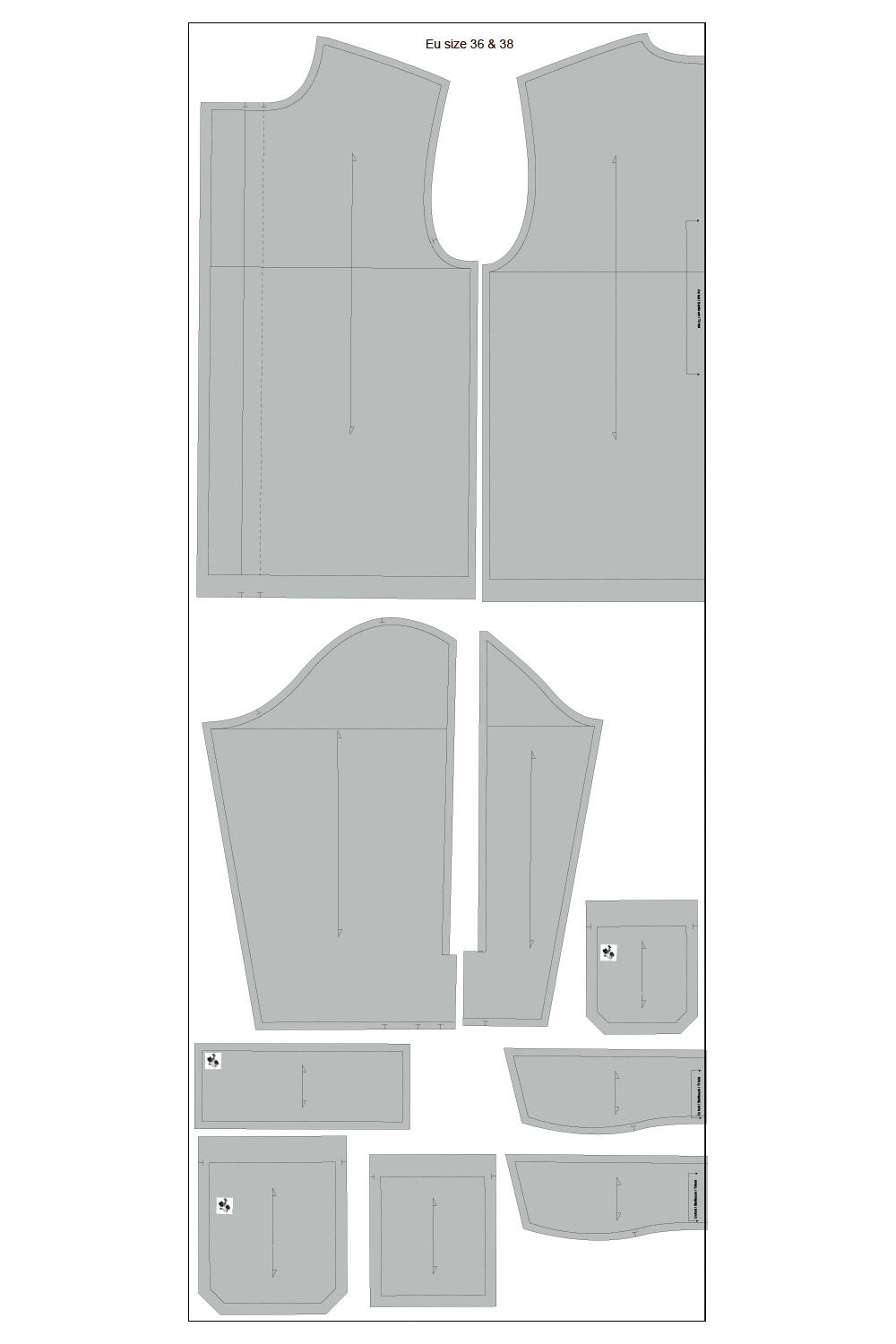
Cutting layout, EU sizes 40 – 48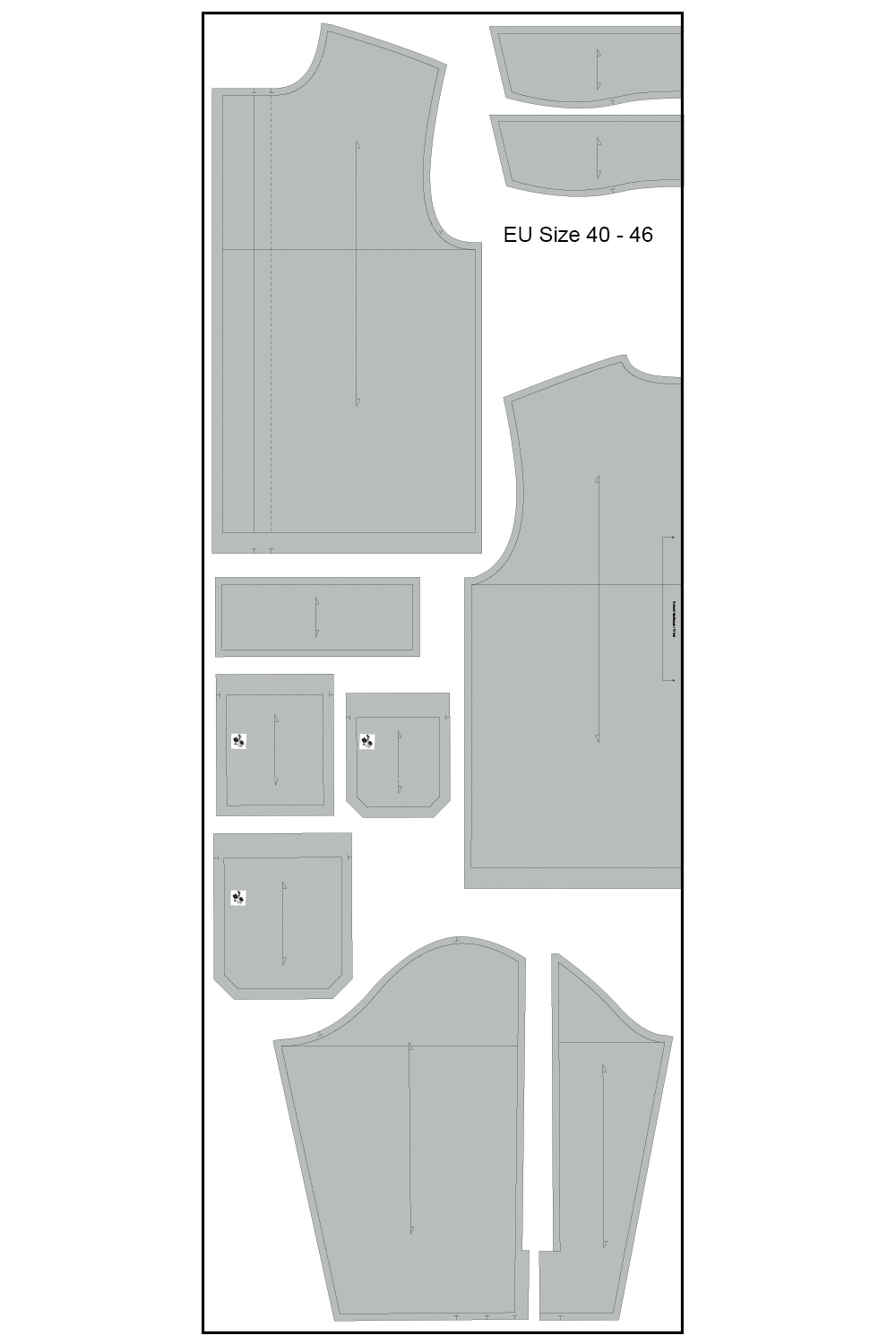
Cutting layout, EU sizes 48 – 54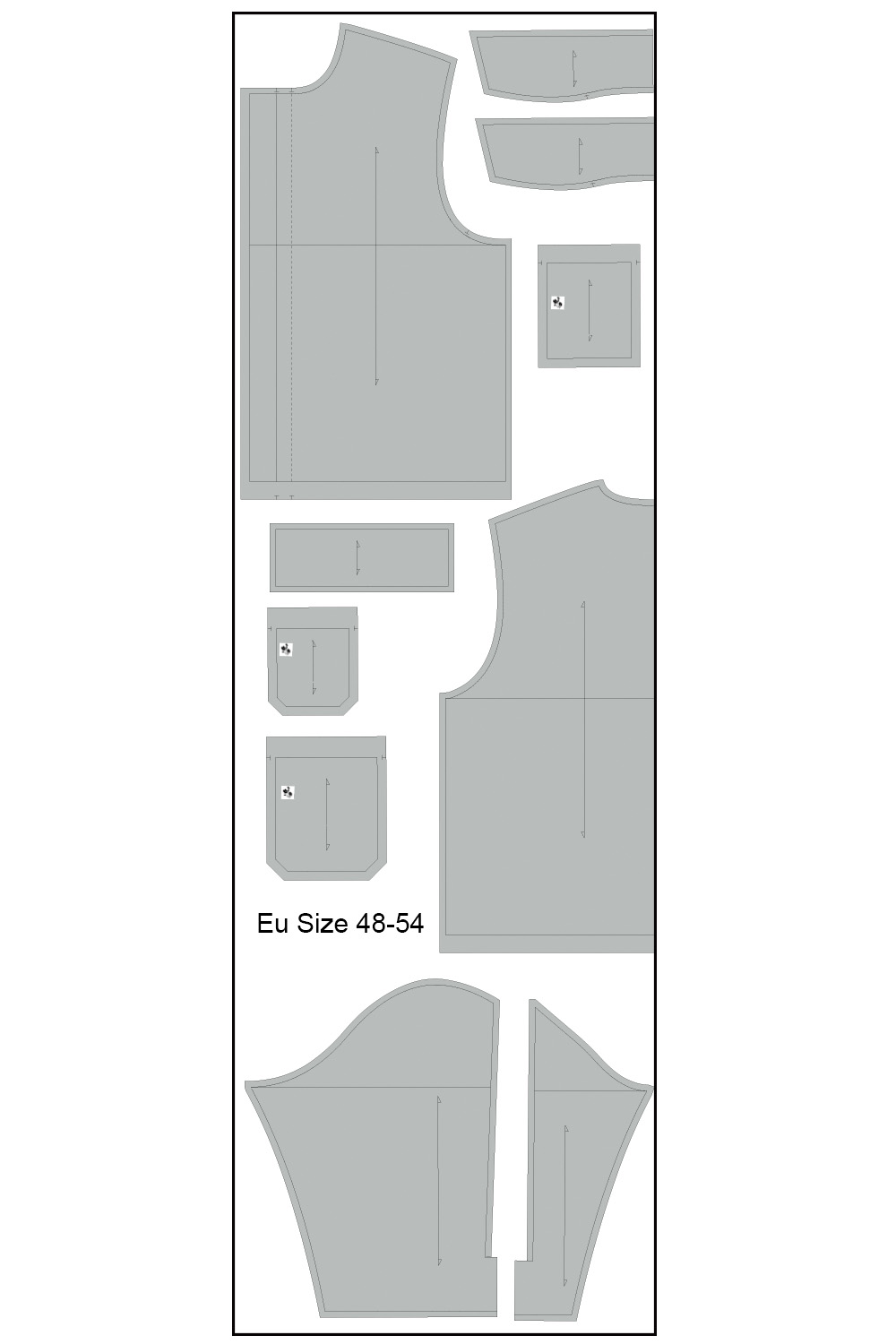
Cutting layout, EU sizes 56 – 58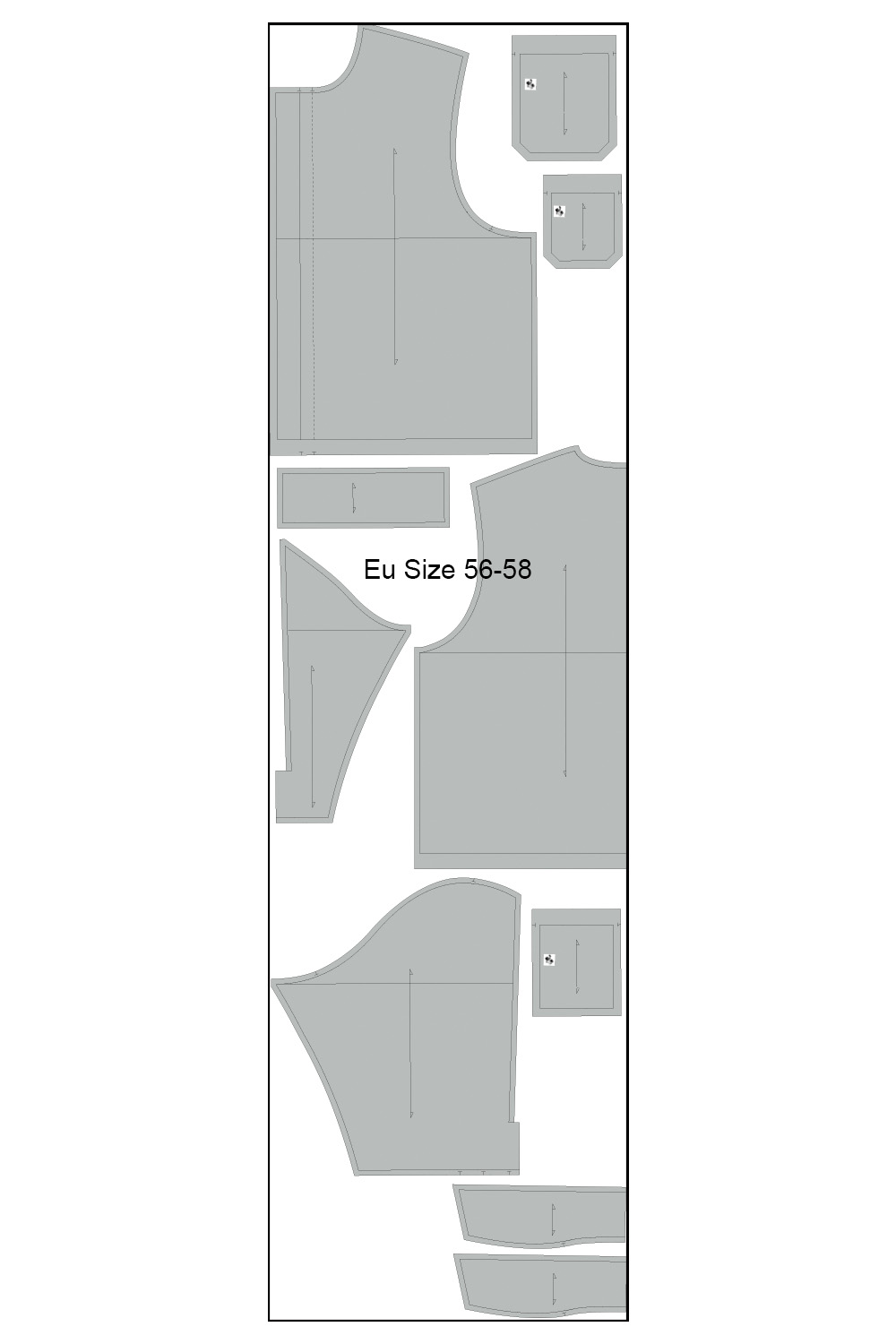
That’s why we sew topstitching…
Topstitching has both a practical and a visual function.
It keeps the seam allowance in place and gives a neat, professional finish.
At the same time, it helps shape the design expression – you can choose thread colour and placement depending on the look you want. Sew close to the edge for a discreet finish or with a little distance for a more striking effect.
4. Sew the two-piece sleeve
5. Sew the shoulder seam
6. Sew the sleeves into the jacket
7. Sew the side and sleeve seams + adjustments
8. Sew the different pockets
9. Attach the inside pocket
10. Sew the front edge and hem
11. Attach the pockets
12. Sew the collar
13. Attach the collar
14. Cuffs
15. Button and buttonholes